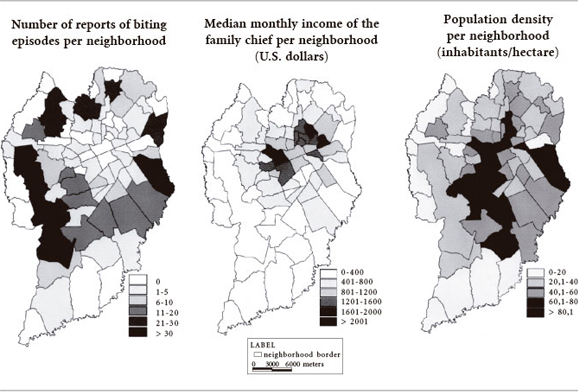Dog bites are the third most common cause of absenteeism among postal workers of the Brazilian National Postal Service in Southern Brazil, with an average off-work time of approximately two days for each biting episode. The objective of this study was to evaluate the neighborhood characteristics involving dog bites that occurred during work time in postal workers, its impact on work and consequent preventive alternatives. A descriptive and analytical cross-sectional study was designed for all Curitiba postal workers. Data were descriptively analyzed and the hypothesis of correlation between median monthly income, population density and occurrence of dog bites was tested. A total of 34.9% of the postal workers answered the questionnaire and 64.6% of them had been bitten while working. The odds of bites occurring in a neighborhood increase by 1.035 times for every increase in one unit in the population density and decrease by 0.998 times for every increase of US$ 1.00 in the neighborhood median monthly income of the head of the family. The occurrence of dog bites among postal workers in Curitiba is related to income and population density and prevention strategies should address mailbox position and adequate fencing to provide protection for postal workers.
Dog bites; Public health; Zoonosis



